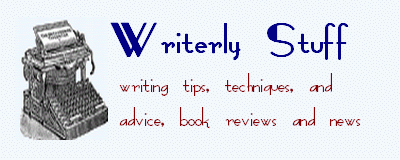I have a book (that I think is out of print; I picked it up used) called Writing and Selling Your Novel, by Jack Bickham. Mr. Bickham subscribes to the Scene and Sequel method of writing, which he got from his teacher, Dwight Swain.
Anyway, I remembered a technique Mr. Bickham mentioned to get an idea if you're stuck with deciding how a certain character reacts in a certain scene.
I was stuck in the 4th Chapter, where my MC (Rita) is in the kitchen with her adoptive mother (Margaret). Basically, she wanted to get away from an argument between two other characters. She also hoped to gain more knowledge of her quest to find her birth mother (although Rita already had suspicions). Her mother is known to give melodramatic reactions to certain things, because she was in the movies in the 1930s-1940s.
What I'd originally wrote, and kept through subsequent revisions, I didn't like; in fact, I didn't like it when I first wrote it. It sounded contrived, but I couldn't come up with anything else, so I kept it as is.
What to do?
Hemispheres
No doubt you've heard or read that the brain is divided into left and right hemispheres. The left is the logical side; the right, the creative side. The left side gives us the words to write with, while the right gives us stuff like dialogue and characters' feelings. Both sides communicate with each other, but not perfectly. That's why we often have that "inner critic" at the wrong times. In other words, when we should be in creative mode, the logical mode comes in and says things like, "This sucks," or "Why are you having this character doing that?" or "That makes absolutely no sense."
A Trick to Help Out
Now that you've had your science lesson for today ;-), I'll tie it in. Mr. Bickham suggests a trick, or technique, that may help you get unstuck.
The idea is to make a list as quickly as you can, with no thought as to rationality or corniness or any of the left-hemisphere stuff. In other words, write so fast that your inner critic doesn't have a chance to say anything.
In my example, I had to think of a bunch of things Rita can think/do/say in reaction to Margaret's overreaction. Is it real or is it Memorex for Rita? I even thought of a violent reaction, with Rita slapping Margaret. It wasn't easy, but I managed to get down about six or seven different reactions. Mr. Bickham suggests 20, but that seemed excessive to me, at least in my case. I arrived at what I thought was keeping within Rita's character, as I thought any violence at this point in the story (despite my alluding to eruptions in her past) wouldn't make sense. Not yet, anyway, as she still has to get used to the fact she's gone back in time, and thus has to get used to her surroundings.
So write that list super fast, and see what your imagination can come up with. You never know; it could be a really good twist that'll send your story in an unusual but cool direction.
~Nancy Beck
Anthropic and the Future of Copyright
1 month ago


5 comments:
Hi, Nancy! Thanks for popping into my blog.
I've never read these books. My characters always run roughshod over me, so I never have to deal with these issues. Of course, I have *my own issues* as a writer!
:O
Of course, I have *my own issues* as a writer!
Don't we all! :-0
Hi Nancy. I have seen that book at the bookstore, and actually the other book you recommended to me also said to do that...at anytime really. In the middle of the scene, just take a second to write down all the different possiblities of where that scene could go. Then chose one and see where it leads!
Do you have any books about creating characters or character development to reccomend?
April,
The one that I've used is Characters & Viewpoint by Orson Scott Card. It's one book in Writers' Digest's Elements of Fiction Writing series. I sometimes have POV problems, so I refer to that book. But he also takes you through discussions and exercises on creating characters.
Another one to consider (and I'm embarrassed to admit that I'm unsure as to whether I have it) is another book in Writers' Digest Write Great Fiction series. It's called Characters, Emotion & Viewpoint: Techniques & Exercises For Crafting Dynamic & Effective Viewpoints, by Nancy Kress.
Besides being a writer (like Card), Nancy Kress also has a couple of writing books out. They're usually extremely well done, with some good exercises at the end of each chapter. She also includes snippets from novels and short stories that point up what she's trying to teach you. This is probably better than what Card does, which is just variations on something he's come up with, but that'll depend on your taste.
Writers' Digest Write Great Fiction: Characters, Emotion & Viewpoint: Techniques & Exercises For Crafting Dynamic & Effective Viewpoints, by Nancy Kress.
Sheesh, I do have this one. And it's good at getting some in-depth characters going.
Post a Comment